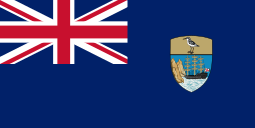
Saint Helena Country Report
St. Helena is located roughly halfway between South America and Africa and is the main island of the British Overseas Territories in the South Atlantic Ocean from St. Helena, Ascension Island, and Tristan da Cuna. Although these islands are considered a collective entity, they are not geographically connected and are located at great distances from each other. Today, most trips to the island are made from Cape Town, South Africa, or via passenger ships from Ascension. St. Helena Airport began commercial flights in October 2017 after a one-year delay due to concerns over wind shear. St. Helena relies heavily on British aid and subsidies to support its economy, with the rest of the economy relying on agriculture and a small but growing tourism sector.
There is very little significant crime on the island, and the main danger to travelers as a result of the island’s complete isolation is the danger associated with the island’s limited medical infrastructure.
Last updated: April 12, 2022
Security
Crime in St. Helena is very low and nothing more than the usual precautions are necessary. Protests are rare in St. Helena, but they can still happen. While the terrorist threat to the UK is significant, the risk to St Helena in particular is negligible.
Last updated: September 6, 2023
Infrastructure
St. Helena Airport reopened commercial flights in October 2017 after more than a year of delays due to wind shear concerns.
Due to St. Helena’s small size, the roads are often narrow, but a limited road network is sufficient.
Basic services such as water, electricity, and fuel are reliably available, but the availability of other goods often depends on supply ships.
St. Helena is unlikely to be the target of cybercrime, and below-average connectivity means the risk is relatively low. Island-led defenses are likely to be quite inadequate, while British-led defenses will be relatively strong.
Last updated: May 12, 2022
Environment
Due to the large distances between the islands, the weather varies greatly from island to island. Mainland Saint Helena has a subtropical climate characterized by mild and dry weather throughout the year. The least rainfall is probably from March to August. The Ascendant is further north, so it’s usually warmer and still rains quite a bit. Tristan da Cuna is even colder and wetter in the south. Earthquakes are rare and hurricanes do not usually affect the islands. Due to its small population, this island is less exposed to human disasters.
Last updated: April 26, 2023
Health and Medical
There is no special concern about diseases on this island. Standard medical care is available, but medical evacuation may be required in an emergency. Most of the main medicines can be found on this island.
Last updated: February 28, 2022
Political
St. Helena has been a very stable British territory for many years. The rule of law in Saint Helena is strong and has no significant concerns, corruption is low and sanctions are not a concern.
Last updated: March 28, 2022















